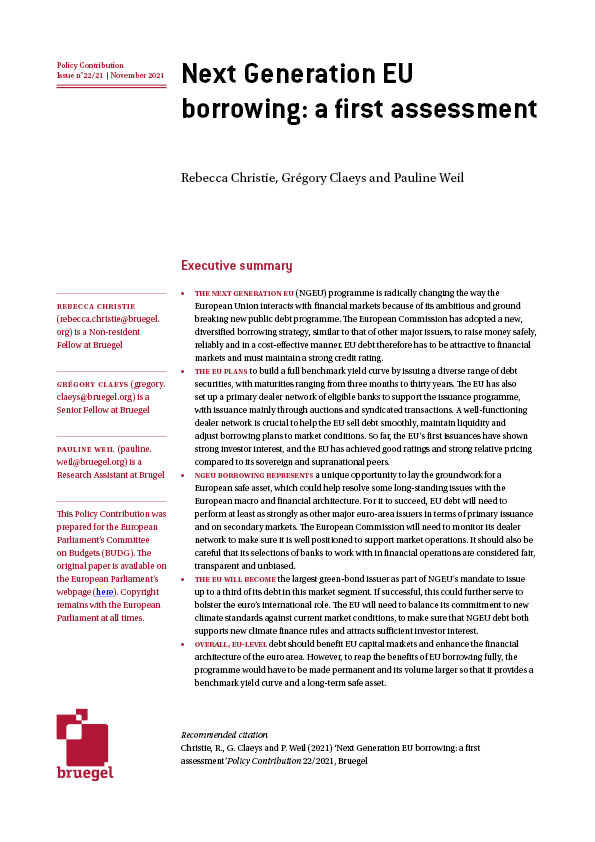Blog Post
High growth firms and job creation in Europe
While all forms of entrepreneurship play a critical role in the economy, a growing body of evidence has shown that it is the high-growth firms that are the key drivers of innovation and job creation.
As shown in this report by the Kauffman Foundation, by and large, job creation has come from young firms (about two thirds, focusing in the US). With a broader sample of countries, this report by the OECD also confirms that young firms are the main contributors to net job creation in an economy. As it is presented, despite the fact that majority of the employment is in older companies, around 50% of all new jobs are created by young firms. When considering not only the jobs that are created but also the ones that are destroyed, we can see that young firms are the only ones contributing to net job creation, that is, their aggregate gross job creation is higher than their gross job destruction. This pattern is also evidenced in this report by the Kauffman Foundation. Furthermore, among these young firms, the high-growth ones (known as Gazelles) are mainly responsible for these new jobs, as explained in the first report by Kauffman and also in this report by EU INNOVA.
Accordingly, if generating employment is a key goal, Junker’s investment plan needs to facilitate the creation and growth of Gazelles, the engines of employment in the economy.
In the charts below, we explore the dynamics of entrepreneurship in Europe and the importance of focusing on young, high-growth firms to foster sustainable job creation. In the first chart, we can see that entrepreneurship across most countries in Europe was negatively affected by the crisis.
Change in Firm Birth Rates, 2010 – 2012 vs 2007 – 2009
Source: Bruegel based on Eurostat
Notes: The color scale represents the change in the average firm birth rate between the periods 2010-2012 and 2007-2009. Green means that the average birth rate in 2010-2012 was larger than in the previous period, and the opposite for red. The firm birth rate is computed as the total number of firm births by 1000 inhabitants. Last available data for Finland remounts to 2011.
The color of each country indicates the change in the average birth rate between the periods of 2010-2012 and 2007-2009, in order to visualize the impact of the European crisis on firm creation. Most of the countries are red, indicating that firm creation has come down. The crisis affected entrepreneurs’ capacity not only to create but also to grow businesses. Moreover, we can see in this report by the eurobarometer that the willingness to become an entrepreneur decreased or stagnated in all the European countries. This potentially means that people are not only less able to create and grow firms but are also less willing to take the risk of becoming entrepreneurs.
The exceptions tend to be in those countries in which there were perhaps explicit or implicit incentives for self-employment, such as in France, where an “auto entrepreneur” legislation was implemented in 2010.
In the next chart, we show how the capacity of new firms to achieve maturity (survive at least 5 years) was affected by the crisis, mostly in the South, Eastern and Baltic countries.
Five years Survival rates
Source: Bruegel based on Eurostat
Notes: The survival rate is the number of enterprises newly born in t-5 having survived to t divided by the number of enterprise births in t-5 in percent. In the chart we see the cohort of firms that survived until 2009 and were born in 2004, the one that survived until 2010 and were born in 2005, and so on. Available countries in the south category: Italy, Spain and Portugal; Core and North: Denmark, Germany, France, Luxemburg, Netherlands, Austria, Sweden and United Kingdom; Eastern and Baltic: Bulgaria, Estonia, Latvia, Lithuania, Hungary, Romania, Slovenia, and Slovakia, Poland and Czech Republic.
It can be seen from this chart that the percentage of firms that were born before the crisis and experienced it, that is, the ones that survived until 2010 (born in 2005), decreased in all the considered countries when compared with the ones that survived until 2009 (born in 2004). However, while young firms in South, Eastern and Baltic countries continue facing lower survival rates along all the considered periods, the core and north countries were less affected. The latter categories of countries were, in general terms, also less heavily affected by the crisis.
In order to reverse this situation and decrease Europe’s levels of unemployment, it is important to focus in Gazelles, as these are the drivers of sustained net job creation. In the following chart, we show that Gazelles are predominately in high tech or knowledge intensive sectors.
Sectorial Proportion of Gazelles among Total Young Firms
Source: Bruegel based on Eurostat
Note: The chart indicates the proportion of Gazelles among total population of young firms across the presented sectorial divisions.We use Eurostat’s sectoral aggregation by knowledge intensity (measured by e.g. R&D and Human Capital intensity) and differentiate between services and manufacturing. Furthermore, within the high-knowledge intensive sectors, we further distinguish market services (e.g. management services, architectural and engineering activities), high-tech services (e.g. telecommunication and computer programing), financial services and others (e.g. public administration, education, health and social work). The high-tech manufacturing industries include, for example, pharmaceutical, computer or spacecraft products.
As seen in the chart, Gazelles are predominantly in Knowledge Intensive Market and High-Tech services, and also in High-Tech Manufacturing, demonstrating the importance of knowledge for these top performing firms.
To complement this view, in a survey conducted by Eurostat in 2010, entrepreneurs were asked about their main perceived challenges for 2011-2013. According to this survey, Gazelles’ founders indicated that, on average, the main factors limiting their growth, after macro conditions, were the difficulties in accessing a skilled workforce and finance. Furthermore, after maintaining their current operations and growing their domestic activities, the main reason why they needed to access finance was to invest in innovation and R&D, which in turn can have further positive spillovers in the economy.
Another major concern that was reported was the heavy regulatory framework there firms face. Fragmentation of regulation across Europe is another barrier for the growth of these firms. In a future paper we will analyze which types of regulations have been more effective in stimulating entrepreneurship. We will also look further into the particular financing challenges facing high growth firms.
In conclusion, we have shown that entrepreneurship was negatively affected by the crisis in the majority of countries in Europe, limiting the creation and survival of firms.
In order to generate the job creation Europe desperately needs, Juncker’s investment plan should not only address SMEs in general, but focus specifically on facilitating the creation and growth of young, high-growth firms. Gazelles are responsible for a disproportionately large share of the net job creation in an economy and are predominantly knowledge-driven.
Therefore a growth plan for Europe should focus on creating the proper framework conditions for the creation and cross-border growth of knowledge-intensive firms, easing access to finance and facilitating investment in innovation and R&D. Likewise, a strong investment in further improving the skills of the current and future workforce is also critical.
Republishing and referencing
Bruegel considers itself a public good and takes no institutional standpoint. Anyone is free to republish and/or quote this post without prior consent. Please provide a full reference, clearly stating Bruegel and the relevant author as the source, and include a prominent hyperlink to the original post.











